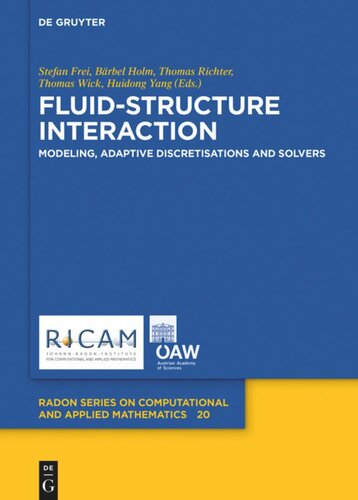

Most ebook files are in PDF format, so you can easily read them using various software such as Foxit Reader or directly on the Google Chrome browser.
Some ebook files are released by publishers in other formats such as .awz, .mobi, .epub, .fb2, etc. You may need to install specific software to read these formats on mobile/PC, such as Calibre.
Please read the tutorial at this link: https://ebookbell.com/faq
We offer FREE conversion to the popular formats you request; however, this may take some time. Therefore, right after payment, please email us, and we will try to provide the service as quickly as possible.
For some exceptional file formats or broken links (if any), please refrain from opening any disputes. Instead, email us first, and we will try to assist within a maximum of 6 hours.
EbookBell Team

4.8
24 reviewsThis monograph discusses modeling, adaptive discretisation techniques and the numerical solution of fluid structure interaction. An emphasis in part I lies on innovative discretisation and advanced interface resolution techniques. The second part covers the efficient and robust numerical solution of fluid-structure interaction.
In part III, recent advances in the application fields vascular flows, binary-fluid-solid interaction, and coupling to fractures in the solid part are presented. Moreover each chapter provides a comprehensive overview in the respective topics including many references to concurring state-of-the art work.
Contents
Part I: Modeling and discretization
On the implementation and benchmarking of an extended ALE method for FSI problems
The locally adapted parametric finite element method for interface problems on triangular meshes
An accurate Eulerian approach for fluid-structure interactions
Part II: Solvers
Numerical methods for unsteady thermal fluid structure interaction
Recent development of robust monolithic fluid-structure interaction solvers
A monolithic FSI solver applied to the FSI 1,2,3 benchmarks
Part III: Applications
Fluid-structure interaction for vascular flows: From supercomputers to laptops
Binary-fluid–solid interaction based on the Navier–Stokes–Cahn–Hilliard Equations
Coupling fluid-structure interaction with phase-field fracture: Algorithmic details